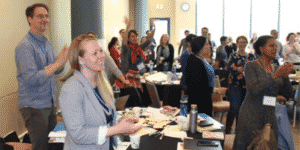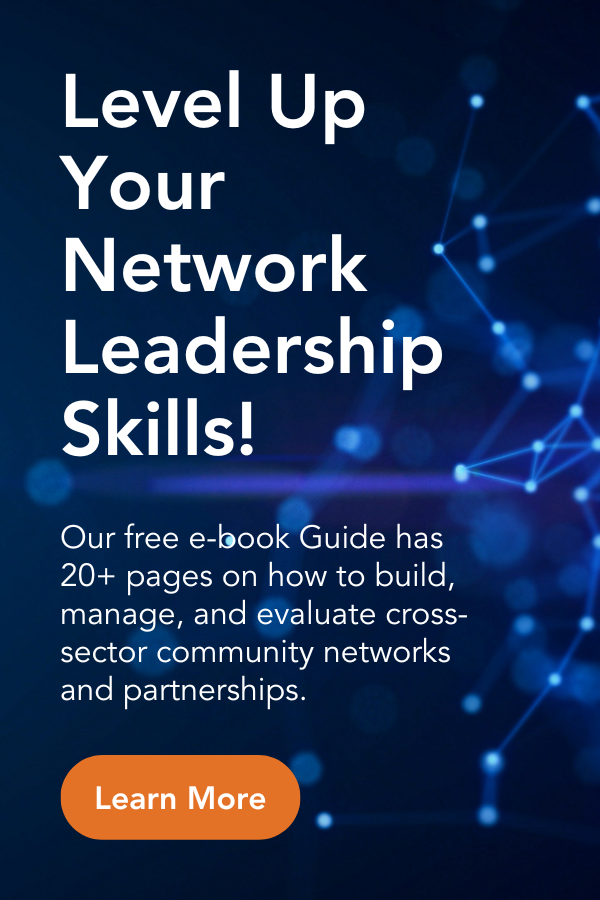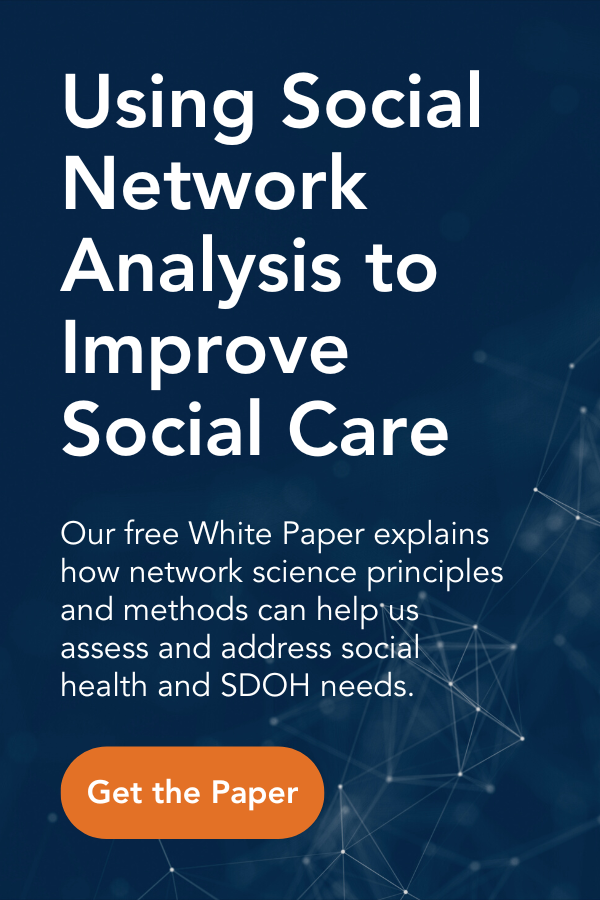
Lessons Learned from the Network Innovation Summit
It’s been over a week since we gathered 250 network thinkers and leaders to explore the future of networks. We’re still processing all the amazing conversations, questions and solutions that came up during the day. Here are a few initial takeaways from the day from our experience hosting an all day, interactive virtual event..
Virtual Events Have a LOT Going for Them!
We entered the day unsure what to expect from a virtual conference. As it turns out, it was an amazing experience! Virtual events have a few big advantages over traditional face-to-face gatherings. First, the virtual setting made the event far more accessible to our partners and community members, and thus more diverse and equitable. With cost savings usually spent on meals, airfare and hotels, and venue fees, we were able to offer a far lower registration cost than expected. As a result, more people from across sectors and walks of life were able to participate, providing a larger pool of experiences and ideas in our discussions.
Another advantage was the real-time discussions and idea generation in the event chatroom. The chat was on fire, with attendees responding to speakers in real time, asking questions, and engaging in dialogue with each other.. As social distancing continues, we highly recommend the use of virtual experiences for other organizations!
It Isn’t Easy Navigate the Tension Between Equity & Technology.
During a session focused on our increasingly connected technology, a lot of attendees experienced what they described as “cognitive dissonance.” While the morning started with a focus on people and equity, it ended with an exploration of the ways technology can connect us and solve complex system problems. However, that same technology can be used to exploit the use of data and impact equity if used improperly. We realized that utilizing new technology and connections is critical for solving problems. The key is a critical eye for the way technology is framed, shared and used to avoid equity pitfalls wherever possible.
Networks Aren’t a Panacea. Context Matters.
A lot of conversation focused on the pitfalls that accompany networks. Dr. Charles Rutheiser from the Annie E. Casey Foundation commented in his talk that “Networks aren’t a panacea… they have no moral valence.” On the one hand, networks help bring diverse groups to the table. On the other hand, it can cost marginalized communities time and resources to participate. Networks need to adapt and find innovative ways to move beyond their silos and involve stakeholders without overtaxing them. This includes compensating those with lived experience for sharing their insight and time.
The Systemic Impacts of COVID-19 are Widespread & Pernicious.
Through our panels with leaders in Public Health, Education, Business, Philanthropy and Rural Communities, we explored many systemic impacts of COVID-19. Here are just a few…
- As evictions rise, the homelessness rate is expected to rise dramatically while shelters are full.
- Mental health experts are concerned about the long-term impacts from isolation, for example increasing mass shootings.
- Mountain/Rural communities dependent on tourism revenue are most at risk of COVID-19 and forced to stay closed.
- With most college dorms closed, many students lack a place to stay or store their belongings.
- As food systems and supply lines are straining and prices rising, those at the bottom are squeezed like never before.
COVID-19 has challenged us all to rethink systems and how no one is left out of this problem space. We focused the theme of the 2020 NIS on Networks in Time of Crisis, and it was motivating and challenging to hear each panelist articulate how in their sectors, COVID has reshaped and surfaced so many of the systemic factors that are easy to ignore in normal times. The NIS gave us a forum to lay those systems factors out on the table and have discussions to think about where we go from here.
Innovative System Mapping and Solution Pitches.
The most exciting part of the NIS was the transition to solving some of the problems we identified throughout the day. Participants engaged in hands-on interactive systems mapping to articulate and dive deep into the problem space. Those exercises were followed up with opportunities to ideate on solutions and crowd-source ideas for how to solve some of these complex wicked problems. You can view all the submissions here. Here are just a few examples…
- Provide business owners a unified source for COVID-19 information, permits and resources.
- Create a ‘shared brain’ for schools and educators to share best practices and improve.
- Design high-tech & low-tech solutions for combating rural isolation.
- Revitalize food systems through green job creation.
- Use a network approach to COVID-19 crisis communication across different organizations and levels of government.

About the Author: Alex Derr, M.P.A.
Director of Marketing & Communications
Alex joined VNL in 2017, originally supporting our events. He now helps manages our communications and marketing strategy and content development work. Alex creates blogs, infographics, reports, and other content while managing our web and social media presence. He also runs our email marketing campaigns, tracks analytics, and conducts market research to drive our strategy. He supports our entire team with copywriting, graphic design and research, and helps with events, webinars, demos, and other online learning. When he isn’t at work Alex spends his time climbing 14ers (30 done, 28 to go!) and blogging on his own website, The Next Summit Blog.
|
|
Thank you for Signing Up |

More News from Visible Network Labs


How I learned that anything is possible, if you are willing to take the leap!



